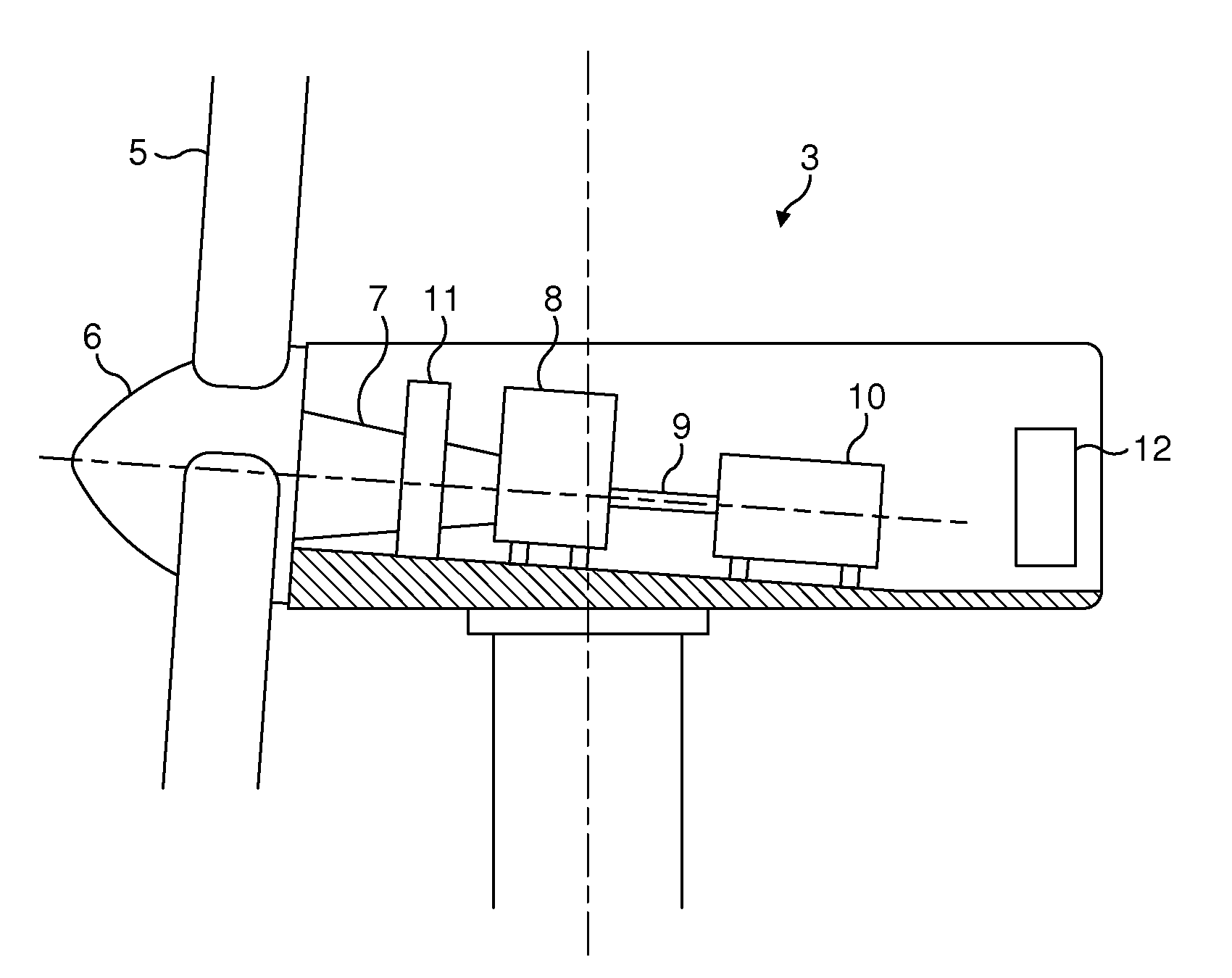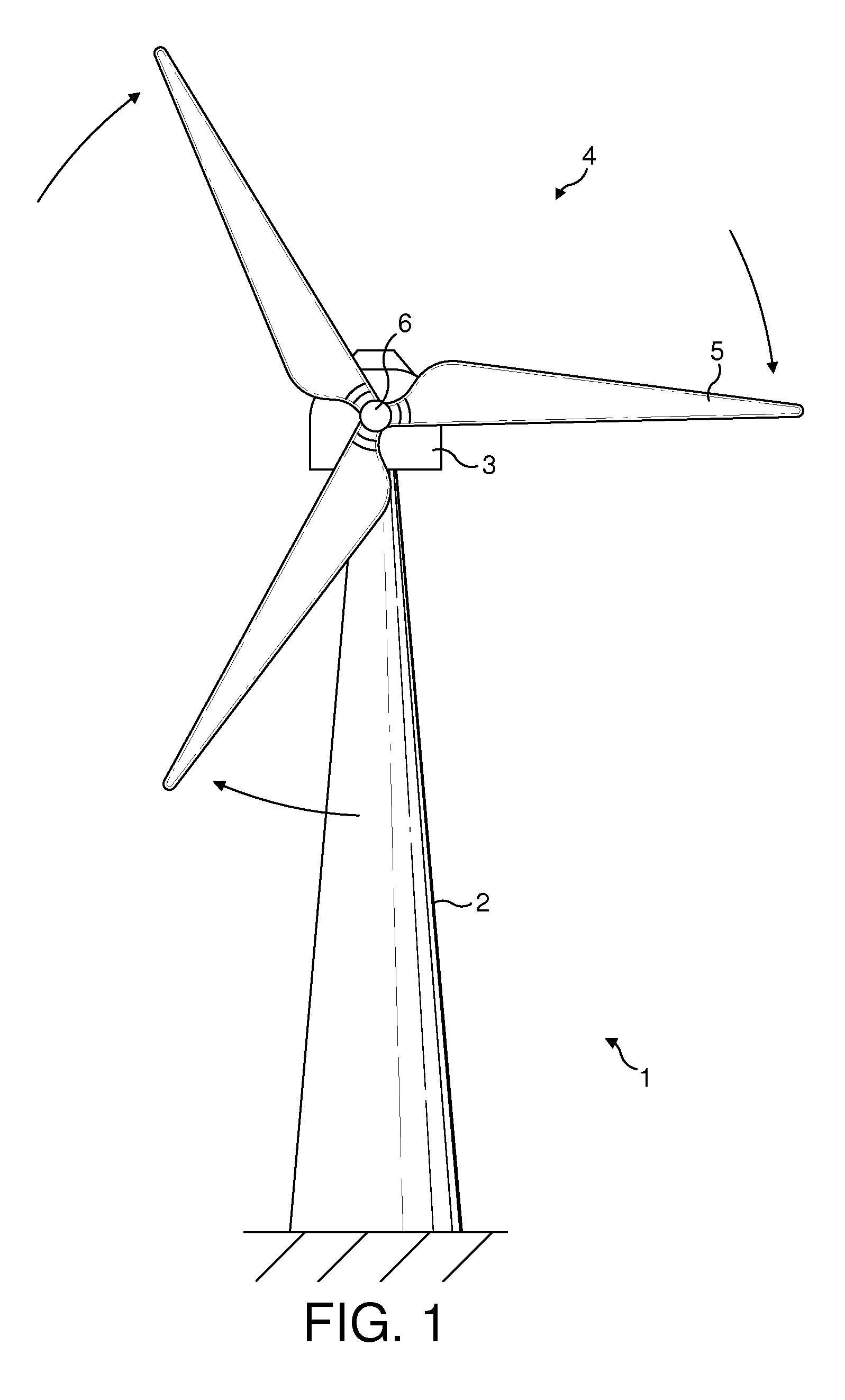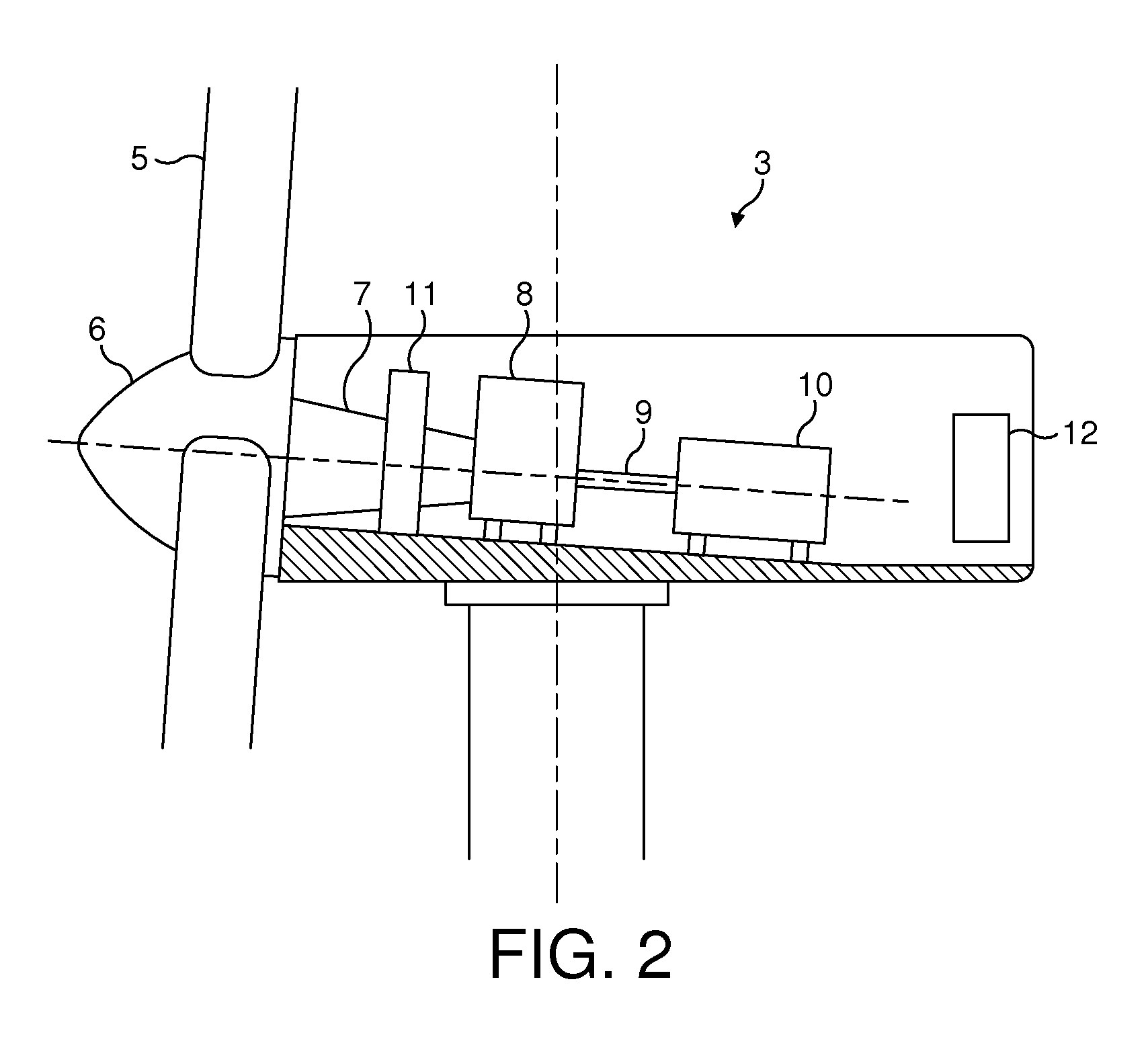Wind energy power plant equipped with an optical vibration sensor
a technology of optical vibration and power plant, which is applied in the direction of optical apparatus testing, non-positive displacement fluid engines, liquid fuel engine components, etc., can solve the problems of high overhead in time and associated cost, lightning damage is a recurring operational problem, and the lighting conductor cannot always adequately protect the sensor equipment, etc., to achieve the effect of reducing the pitch, improving the electricity generation regime, and reducing the pitch of the rotor blad
- Summary
- Abstract
- Description
- Claims
- Application Information
AI Technical Summary
Benefits of technology
Problems solved by technology
Method used
Image
Examples
Embodiment Construction
[0040]A wind energy power plant optical vibration sensor will now be described. The sensor has two light sources that emit light at different respective frequencies. The light from the first light source is arranged to fall on a surface of the wind energy power plant at a detection location that is being monitored, such as the surface of a wind turbine blade, or the surface of a component inside the nacelle. Movements in the surface result in changes to the phase of the light reflected back from the surface, and these changes can be detected by mixing the first light with the light emitted from the second light source. The difference in frequencies between the two light sources results in a beating of the resulting interference signal, whereas movements in the sensor surface result in changes in the phase timing and frequency of the beats.
[0041]Reference should now be made to FIG. 3 which illustrates a first example embodiment of the invention. The sensor comprises a first 15 and a ...
PUM
 Login to View More
Login to View More Abstract
Description
Claims
Application Information
 Login to View More
Login to View More - R&D
- Intellectual Property
- Life Sciences
- Materials
- Tech Scout
- Unparalleled Data Quality
- Higher Quality Content
- 60% Fewer Hallucinations
Browse by: Latest US Patents, China's latest patents, Technical Efficacy Thesaurus, Application Domain, Technology Topic, Popular Technical Reports.
© 2025 PatSnap. All rights reserved.Legal|Privacy policy|Modern Slavery Act Transparency Statement|Sitemap|About US| Contact US: help@patsnap.com



